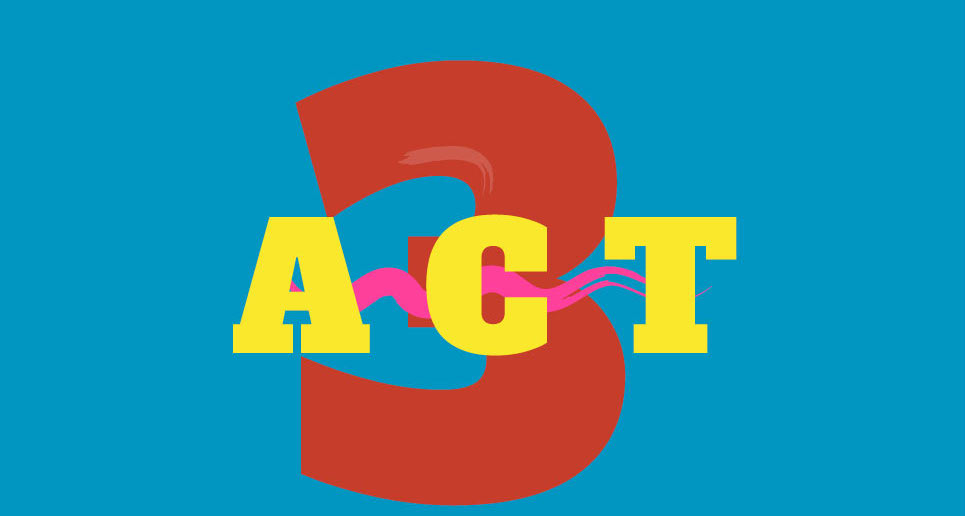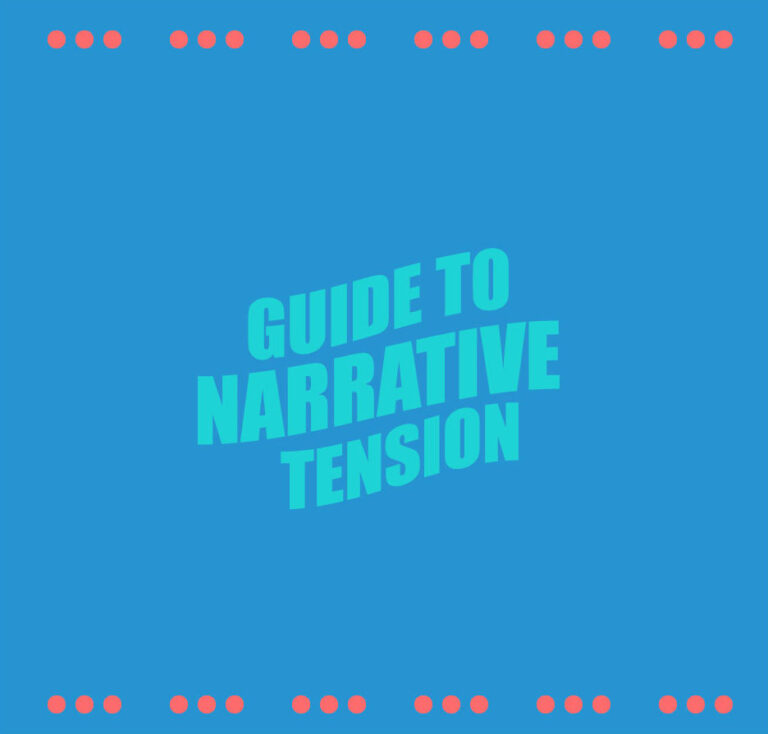Writing a novel with a gripping story is difficult. Crafting something that can hold the readers’ attention and keep them guessing what’s gonna happen next is crucial for the success of the story. The pace must be right, it must not be too short or too lengthy. To make sure that you have a great story, you can use the five-step finale formula by Blake Snyder.
The five-step finale works as a guide that tells you what element your story must have to make it interesting. It was mentioned by Blake Snyder in his book Save the Cat! Strikes Back. To understand what this is, you must know, in brief, the three-act structure of a story.
The three-act structure
From drama to comedy, from ancient plays to the modern story, every narrative follows the three-act structure. While the story is much more complex than just three acts, these acts are always present.
The three acts are the first act, the second act, and the third act.
The first act is the expository part where the viewers and readers are told about the basics of the story, about the characters, their drives, the imminent conflict, the relationship between the characters. If it is fantasy, a major portion of the first act is world-building.
The second act is where conflicts arise. Here things go wrong and the characters are driven into desperate actions. This is also where the comic relief is given. Some fun parts of the story occur here to lighten the mood a little. This part is also where most of the character development happens.
The third act is the final act and is commonly known as the climax of the story. This part is the much-awaited part as the whole established conflict is solved and the character arc is completed. This is where the five-step finale must be integrated. The third act is the finale of the story, it must be complex, satisfying, and enjoyable.
The five-step finale with examples
The five-step finale occurs in the final act of the story. This is more like five sub-division of the climax of the story. Do note that what the five steps represent the essence of the story and not the literal meaning. I’ll explain as I mention these steps.
Storming the castle
In the book, Blake Snyder uses the term “Storming the Castle” to denote the beginning of the climax. It does not mean storming the castle, but to begin the most difficult task. But sometimes it could be the literal meaning. For example, in the TV series A Game of Thrones, the Night King in the climax has the objective of storming the castle.
Step 1, Gathering the team – To “storm the castle”, the protagonist must gather a team. As directed by the book, this part should occur at the 85-90th page of the book. But this is dependent on the type of story you are writing can vary.
This is the planning where the protagonist gathers a team who is usually his/her friends. There may be additional parts of reconciliation with old friends, finding strategy, learning new things, facing the fears, etc.
For a boxing story, it could be the protagonist getting over the fear and start training. For a heist or spy movie, it could be gathering a team to pull off a very risky mission, for a horror movie, it could be preparing for an exorcism.
Step 2, Executing the plan – After everything has been decided, the team executes the plan. This is a satisfying part and you must aim to give the readers the joy of seeing everything come into place. The plans, the teamwork, the banter, everything goes great. And after all the hard work, they have reached the final opponent, the crux of the story. The great reveal.
In the movie Bad Boys II, Marcus and Mike have a great plan to get Marcus’ sister from the bad guy. They prepare a great plan, get a team together, and defeat the bad guy. But…
Step 3, The high tower surprise – Marcus and Mike had the perfect plan, they did everything great and even destroyed the villain’s lair. But that wasn’t successful, the villain took Marcus’ sister and fled. This is what the high tower surprise is.
The high tower represents the place where the villain lives. The surprise here refers to the failure of the smooth-going plan. This acts as a major twist to surprise and impress the readers. Adding this element makes your story complex.
But this doesn’t mean this “surprise” can be anything. The surprise must make sense, be clever, and challenge the protagonist to learn from the mistakes and change completely, finally completing their character arc.
This surprise can be anything, from the real villain being someone different (like Iron Man 3, Prisoners, Memento, etc). Or it could be something that the protagonist was hiding something (Inception, Predestination, etc).
Step 4, Dig down deep – This is the moment where the protagonist truly shines. After everything fails, after all that was planned does not work, the protagonist must act quickly, think of something from his experience and learning. The stress is unbearable and the readers must feel the same. This part aims to make the readers find no way. They must think to themselves, “there’s no way the protagonist is getting out of this”.
This hopelessness is what creates the narrative tension which is necessary for the story to be gripping. The quality of working and winning when in extreme pressure is always loved. This is why a high stakes game when won is so satisfying. We want to see people emerge out of difficult conditions. This is what the writer must give to the readers.
A great example of learning this step (and all the other steps) is by watching anime. JoJo’s Bizarre Adventure does this so good. The second season, Stardust Crusader has the five-step finale so well integrated into the story, every episode is like a new lesson for writers. A must watch (or read if you go for manga) for aspiring writers.
Step 5, Execution of the new plan – This plan is what the protagonist must come up with. A great way of presenting this new plan is by not telling everything to the readers. Let them trust the protagonist in whatever he/she is doing. This builds trust and when the protagonist is successful, the explanation of the new plan makes it even more satisfying to read.
The writer must make sure that the plan the protagonist comes up with makes sense, defines his character well, and complete his character arc, finally changing from one person to another. All the conflict that began must be resolved here, nothing that was introduced before should remain unresolved. A full circle.
Every great story has a great ending. So make sure you end the act three of your creation in a great way. Take the ending of any great movie or book, be it Forrest Gump or Gone with the Wind, every great story has something that sticks with the readers long.

The conclusion
The end of the third act marks the end of the plot your story began with. With all the conflicts resolved and the character arcs completed, there is nothing left that needs to be shown about the story. But it doesn’t mean you should end the story there.
Many writers leave the story right after the completion of the third act. While it may work, they’re missing out on something great. The conclusion must have some substance on itself and never rely on the end of the third act. You have to show the life of the characters and the story progression after the third act.
Your aim should be to show the life of the characters after the struggle is over. How changed the charters are, are they living a different life, how the world or people changed towards them. All these little things have a great impact on the story and the readers.
If you can, the conclusion can completely change the entire story. Take the case of the movie Inception. The spinning of the top and seeing the faces of Cobb’s children raised a few questions. Did he wake up? Was it real or something out of his imagination?
Or take the example of Memento. I keep bringing Christopher Nolan’s works because they are so good at employing the conclusion technique. At the end of this movie, the protagonist is shown to have achieved his goal. The third act is over and the movie should end. But the conclusion holds the real twist and it changes the entire story.
Take the example of the novel Gone with the Wind. (Spoilers ahead), the entire plot of the book is about Rhett trying to get Scarlett to love her back. This is “storming the castle”. In the end, at the end of act three, Scarlett realizes her love for Rhett and goes to her. But in conclusion, things change completely. The Rhett who spends almost half of his life to get Scarlett to love her leaves her with the parting words, “Frankly dear, I don’t give a damn”.
The conclusion changed everything and the parting lines have been immortalized. This is why authors must always pay attention to the conclusion and try making it impactful.
Related articles to improve writing:
- Stephen King’s advice on writing better imagery
- How to edit better using structural editing
- Using prisoner’s constraint to write better
The world after everything
Remember that there is life after the story is completed. After the character arc has been completed and the objective is achieved, the world should be shown. This new world where the changed protagonist lives is the exact opposite of the world that was in the beginning of the story. Showing this can tie a knot in the readers’ heart and let the story sink in completely. It makes their effort and time for reading the story worth it.
So show the world and how it is different. Show how the characters’ lives are different, how the choices the protagonist makes are different. All these things must be shown in the end. Give the readers a great conclusion.










